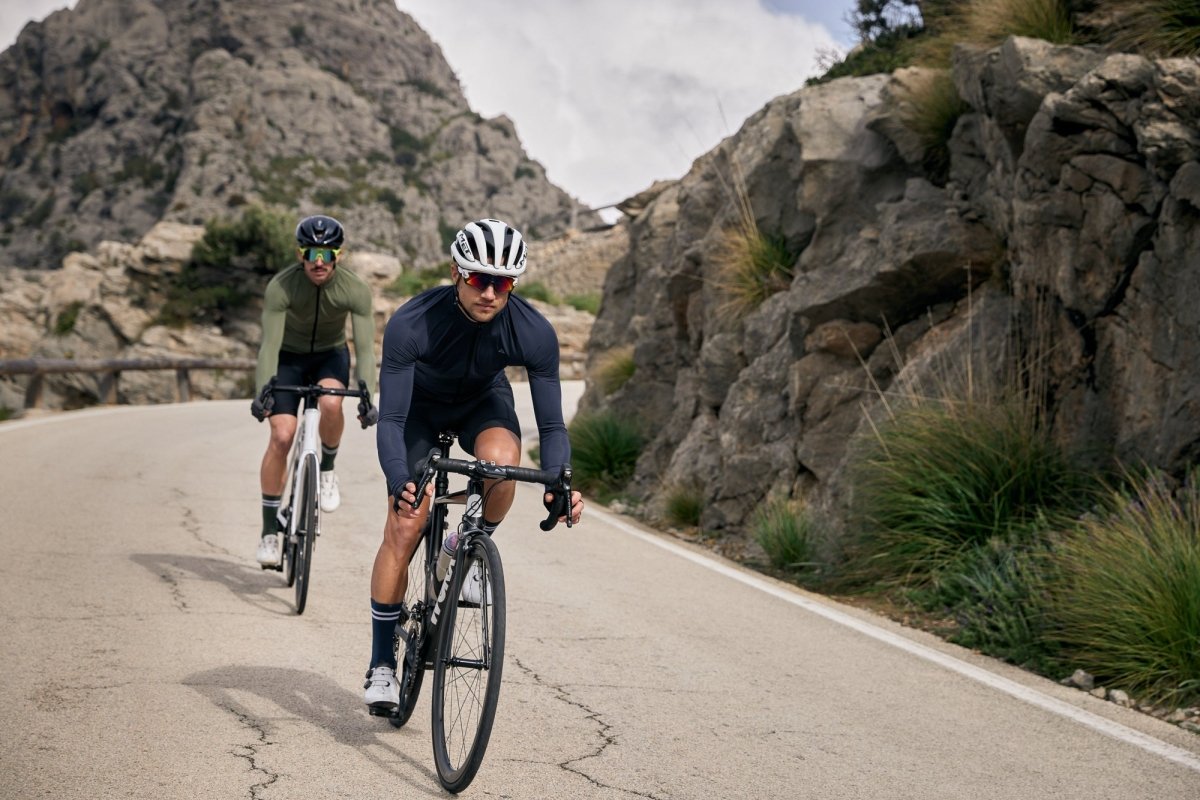Triathlons are more than a physical challenge; they're a symphony of swimming, cycling, and running, each requiring a unique set of skills and strategies. For beginners, understanding how these sports complement each other is the first step towards mastering the triathlon. Our beginner's guide delves into the heart of triathlon training, offering expert advice on workouts, gear, and how to embrace this multifaceted sport with confidence and excitement.
SETTING GOALS AND DEVELOPING A HOLISTIC PLAN
Combining your aspirations with a structured training plan is key. Whether you're aiming to complete a Sprint or Ironman distance, your plan should include gradual progressions in all three disciplines. As a beginner, you may want to find a coach specialized in triathlons that can help create a plan tailored to your current fitness level and future goals, or find one online. Here's our few tips:
- Swimming: Enhance your freestyle technique with a few personal trainer sessions and incorporate both pool and open-water sessions. Do both shorter technique swimming as well as longer endurance sessions.
- Cycling: Start with indoor bike classes to build stamina before investing in a bike. This approach allows you to familiarize yourself with cycling training in a controlled environment. Cycling is a great low-impact and low-injury probability exercise, so start getting those kilometers in immediately.
- Running: Begin with a foundation of regular running, focusing on form and consistency. 80% of your runs should be easy, conversational pace runs, and the rest should be divided between interval, hill or tempo sessions. Look up Zone 2 training for more info about the importance of easy runs.
- Strength training: Essential for building the muscular endurance needed in all three disciplines, strength training helps improve overall performance, reduces the risk of injury, and aids in faster recovery. Include exercises targeting core stability, leg strength, and upper body resilience, particularly beneficial for swimming and cycling.
THE ART OF THE BRICK WORKOUT
Brick workouts are crucial in triathlon training. These sessions, where you train two disciplines back-to-back, prepare your body for the unique demands of a triathlon. Start with shorter combinations, like a bike ride followed by a 15-minute run, and gradually increase the intensity. These workouts improve your muscle memory, transition efficiency, and mental resilience.
GEAR ESSENTIALS: INVESTING SMARTLY
- Swimming: For training in the pool, all you need is a swimsuit and goggles. Invest in good quality goggles to avoid water leaks from the sides and a good swim cap to protect your hair from chlorine. A comfortable, well-fitting swimsuit or wetsuit is essential for races that include open water swimming. Most races oblige you to wear one if the water is below 16°C/60.8°F.
- Cycling: Before buying a bike, consider taking cycling classes to gauge your interest and ability. When ready, get a bike that fits your body type and riding style. Remember, a proper bike fit can drastically improve your riding experience. Safety is crucial, thus, invest in a good-quality helmet. You may also consider getting click pedals and special bike shoes to maximize your power on the bike.
- Running: Visit a running store for a professional fitting for running shoes. Taking up triathlon training means you will be logging in many kilometers on your feet. The right shoes will help angle your foot to land in the most efficient position, preventing injuries and ensuring you build up distance. For longer runs, you may consider a running belt or vest to bring water and have a place to store your phone and other belongings.
OTHER ESSENTIALS: NUTRITION, RECOVERY AND COMMUNITY SUPPORT
The most fundamental aspect of training is proper sleep and recovery. Getting a good 7-9 hours each night is essential for your body to recover from workouts and have enough energy to make progress in training. Incorporating foam rolling and stretching into your routine will also support your body in the process. And do not underestimate the power of a warm up and cool down. Remember, dynamic stretches before, and static stretches after the workout.
Another key player in the equation is nutrition and hydration, which should both be tailored to your training regimen. Triathlon sports are all intense calorie-burning activities, so make sure to eat enough to fuel your workouts. Focus on a balanced diet and proper hydration. Lastly, tap into the triathlon community for support, motivation, and shared learning. Find friends around you who are up for the challenge, or join Facebook groups to find new training buddies.
EMBARKING ON A NEW JOURNEY
Starting your triathlon training is not just about preparing for a race; it's about embarking on an empowering journey that tests your limits and expands your capabilities. With the right approach to training, brick workouts, and gear, along with a supportive community, you're not just training for a triathlon; you're setting the stage for an incredible adventure in fitness and personal growth. Good luck!







Unleash Your Inner Powerhouse: Why a Strong Core Benefits You (And Everyone!)
Zone 2: The Secret of Getting Faster and Living Longer